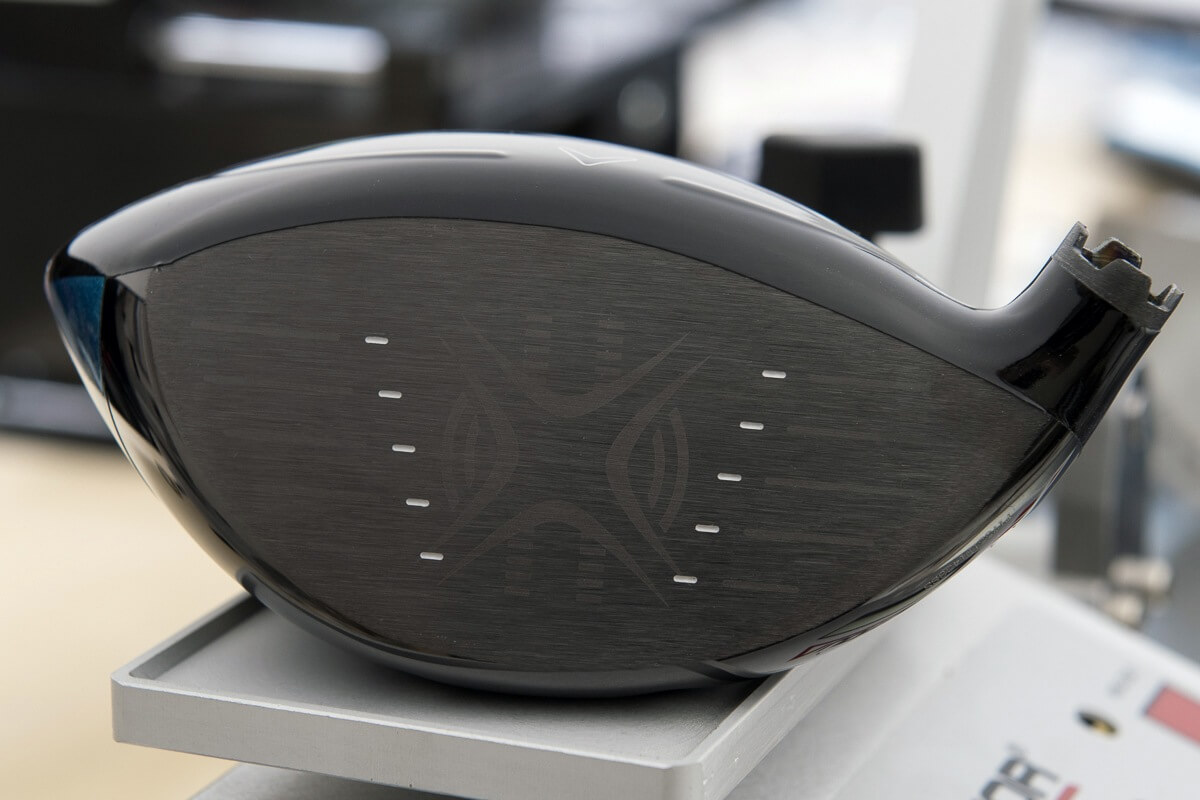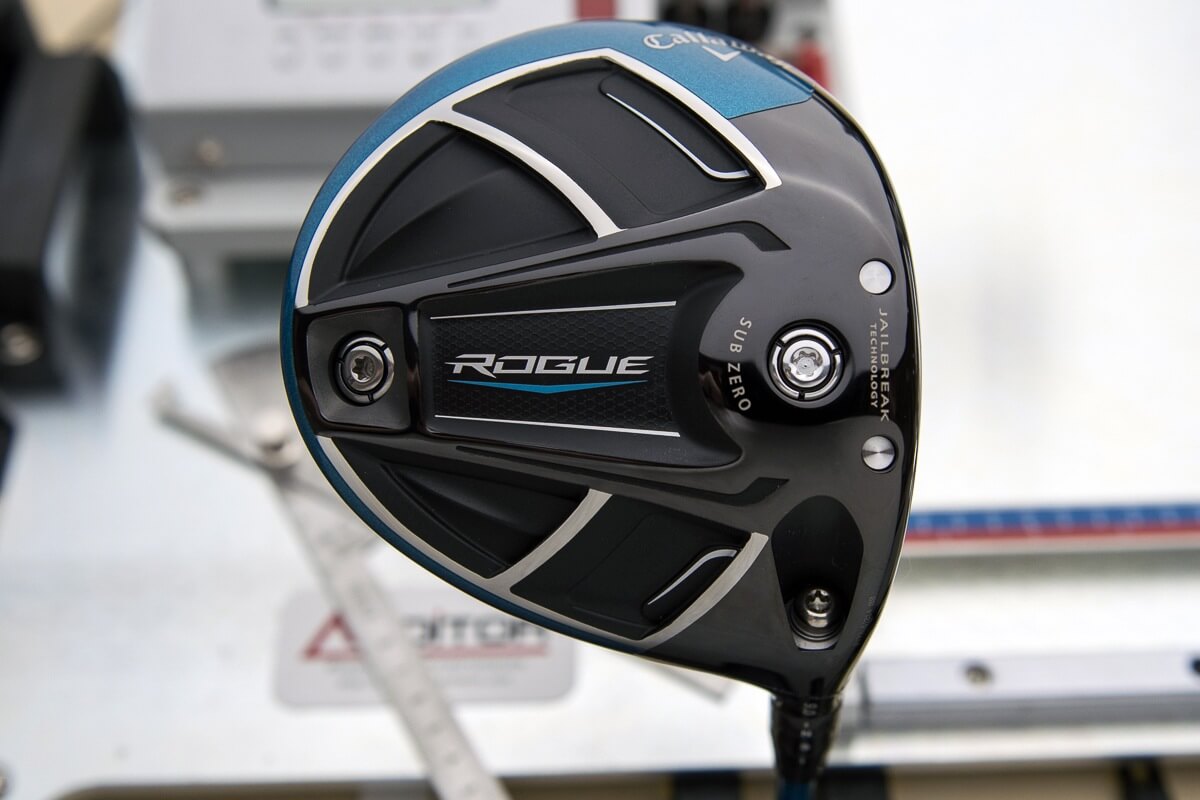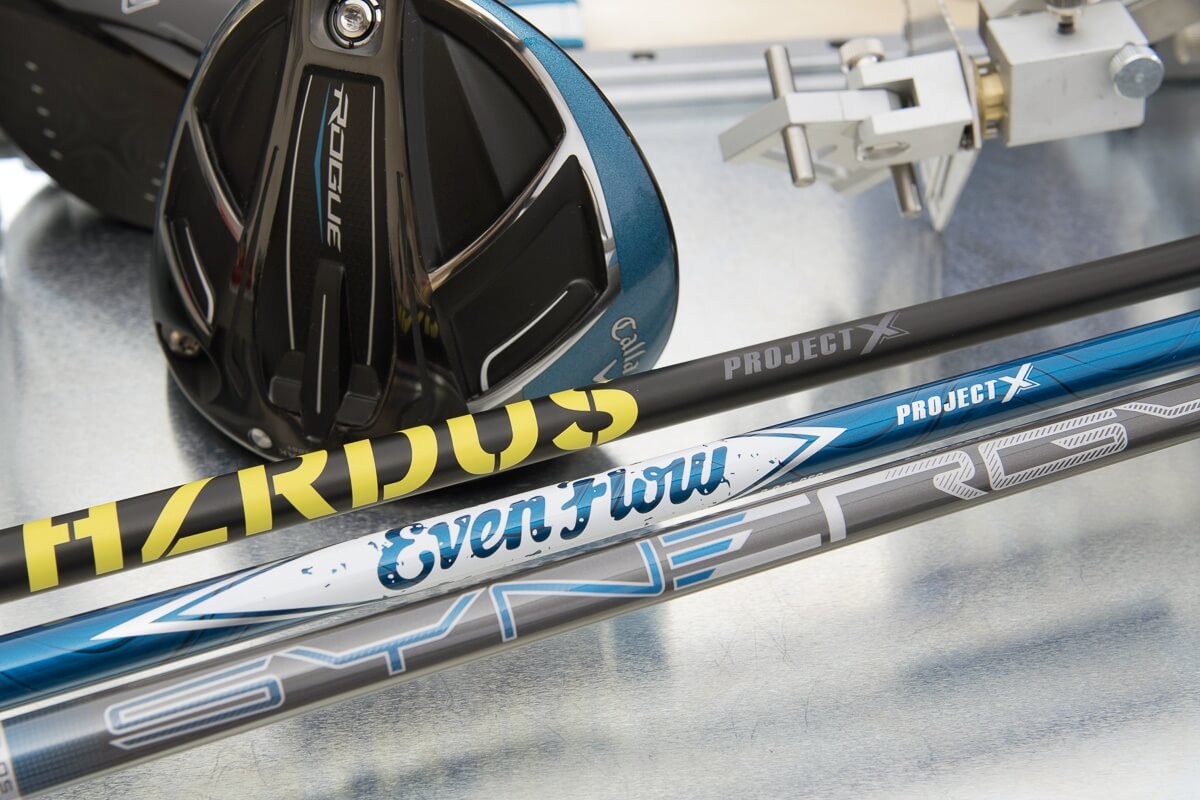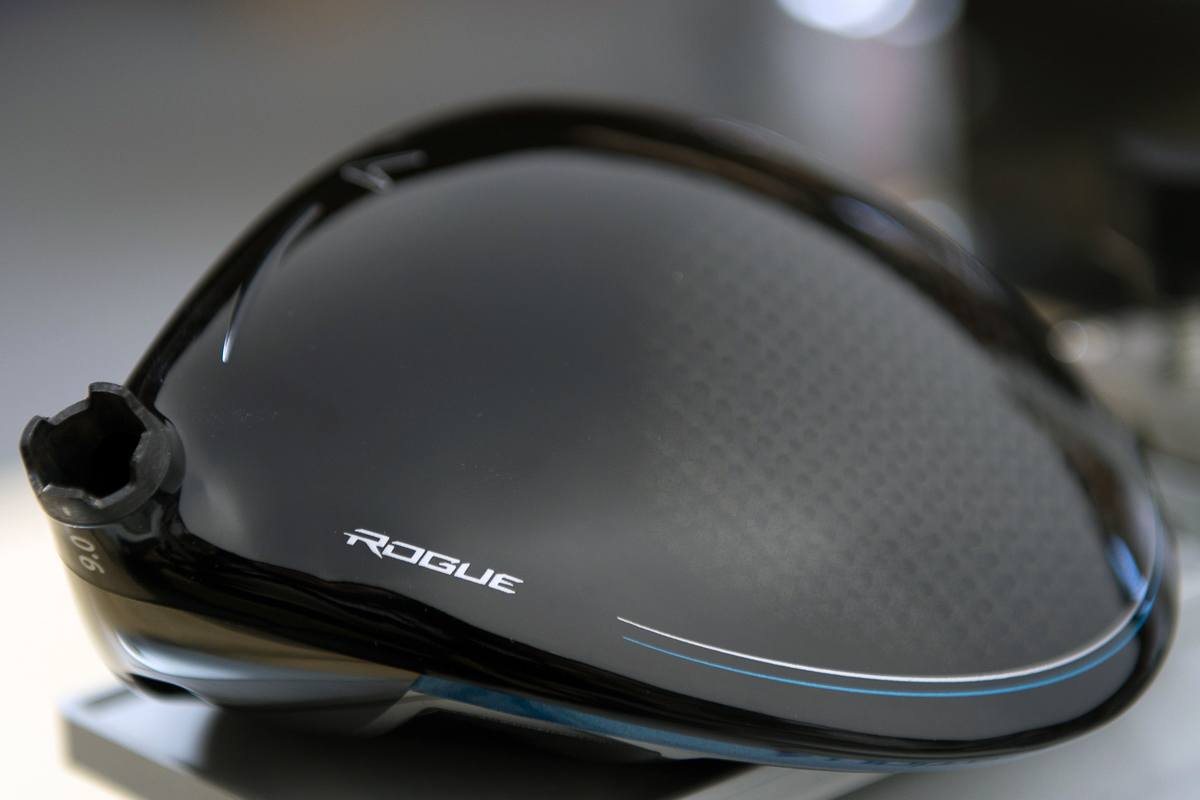I didn’t expect to write this story (no, not because Callaway hates me). My thinking was that Epic would spend another 6 months as Callaway’s flagship driver while a new XR would emerge to satisfy the market’s hunger for something new.
Shows you what I know.
According to Callaway, the XR platform doesn’t allow for a driver as capable as Epic. Ultimately that’s probably a cost argument. To do Epic things requires different materials (Triaxial Carbon instead of Titanium), and more complex manufacturing (Jailbreak), and Callaway can’t do that at an XR price and still make its margins. So, for now anyway, the company has decided to leave XR’s spot in the lineup empty. Instead, we get Rogue (no relation to the Aldila shaft franchise), a replacement for its market-leading Epic.
Rogue is a step forward in quantifiable ways, but it’s not radically different – at least I don’t think so.
Before we get into how Callaway improved on Epic, I wanted to briefly cover a couple of points for the too many releases crowd:
- It’s been a full 12 months since Callaway released Epic, that’s not unreasonable.
- Epic exits the market with its MAP price never having been reduced (though savvy shoppers can find them in Like New condition on Callaway Pre-Owned for under $400).
- Nobody at Callaway thinks you’re stupid and nobody is saying you have to buy a Rogue.
That last point came up in a recent, and sometimes heated, Twitter exchange with Callaway’s Senior VP of Marketing (and also President at OGIO), Harry Arnett. Nobody is going to argue that every golfer gets fit for all their clubs, but to Harry’s thinking, if you’re going to spend $500 on a driver, you should…
“GOLFERS, GO GET FIT BY A PROFESSIONAL AND IF IT DOESNT BEAT WHAT YOURE CURRENTLY PLAYING OR OTHER PRODUCTS BY OTHER BRANDS THEN FOR GOODNESS SAKE DONT BUY IT.” – Harry Arnett
Our blockquotes are always displayed in full caps, but insomuch as you can on the Internet, Harry was shouting to get his point across.
So what’s the takeaway from all of that? Get fitted for Rogue, and it it’s not better, don’t buy it. Even I can’t argue with that.
Do You Need Rogue?
I’d wager that if you bought Epic, and especially if you were properly fit for Epic, you’re probably in a good place. Nobody is promising that Rogue is going to give you 10 more yards. In fact, while there may be a few yards to be gained here or there, Callaway’s press materials are refreshingly light on marketing speak.
If that sounds a bit understated, honestly, it kind of is – and yes, that did surprise me. For a company that hasn’t always dealt in quantifiables, Callaway has been ever so slightly more forthcoming about Rogue’s MOI numbers. And that’s really where the progress lies. A bump in MOI, along with better aerodynamics and some refinements to its face technology get you a driver that is on average (meaning when you factor in miss-hits) a bit longer. If you always hit the center of the face… well, you don’t, so it’s not worth discussing.
Let’s take a closer look at what Callaway says makes Rogue better.
Rogue – Your Epic Upgrade
The foundation of everything that allowed Callaway to improve on Epic lies with some changes it made to the geometry of its suddenly signature Jailbreak technology. Epic’s titanium Jailbreak bars were straight, while Rogue’s bars have a more refined hourglass shape. By removing material from the center portion of the bars, Callaway says it was able to reduce the weight of the Jailbreak structure by 25%.
I’ll give you one guess what comes next.
Higher MOI
As with any weight savings story, Callaway took that bit of reclaimed Jailbreak mass and used it to improve performance in other areas. Specifically, Callaway refined Rogue’s shape and weight distribution to boost MOI. Callaway’s numbers are based on combined MOI, which means both heel-toe (the most commonly used number), and top bottom MOI. The latter is particularly important for producing more consistent spin for impact above and below face center.
To give you a reference point, Callaway considers anything above 7000 to be very forgiving. As the market has moved away from forward CG designs, one could argue the threshold should be a bit higher, but 7000 is still solidly on the forgiving end of the chart.
Callaway says Epic’s total MOI is 8000, and that’s certainly within the ballpark of what we have on our charts as well. What I’d wager most don’t realize is that with the heavier weight in the back, Sub Zero’s heel/toe MOI was even higher. That likely won’t prove to be the case this year. Callaway says that the Standard Rogue, with a total MOI around 8600, will be the more forgiving of the two. It bears mentioning that Callaway doesn’t disclose heel/toe numbers separately, so we don’t yet know how it stacks up to others like PING, PXG, and Cobra, who compete in the high MOI space.
A brief MOI aside
This part of the discussion presents an opportunity to clean up some misunderstandings about what more MOI gets you, and how that differs from what bulge and roll gets you.
Fundamentally, MOI is a protector of ball speed. The higher the MOI, the less balls speed is lost on off-center strikes. MOI isn’t about left/right dispersion or what we might call accuracy, that’s where bulge and roll comes in. Bulge and roll helps bring off-center strikes back the fairway (ideally), while higher MOI helps narrow the distance between your longest shots and your shortest.
To wrap this up into a single talking point: based on Callaway’s MOI numbers, we can expect Rogue to be every bit as long as Epic, but the higher MOI means it will also be longer on mishits. Callaway puts the number at 16% tighter long to short dispersion.
X FACE VFT
As part of its speed preservation story, Callaway leverages a face technology it calls X Face VFT. The company claims the updated VFT enhances the Jailbreak effect. The weight savings from the new bar design allowed Callaway to be more aggressive in strategically thinning portions of the face based on what it calls impact probability distribution. You can reasonably assume that has something to do with the tendency for mishits to occur high on the toe and low on the heel. This is still not new information.
X Face VFT certainly isn’t an atypical face technology story. Ultimately, it’s an MOI complement of sorts, in that it also helps preserve ball speed on off-center hits.
Improved Aerodynamics
At some point, you may have heard that Callaway partnered with Boeing to develop its SpeedStep Crown technology. I’m reasonably sure Callaway mentioned it once or twice. Not unlike PING’s Turbulators, the function of the aerodynamic features is to delay separation of the airflow over the crown, reduce drag, and ultimately increase head speed. In the development of Rogue, Callaway again engaged Boeing, this time to take a broader approach to the overall geometry of the club. The changes are subtle – improvements to the transition between face and crown, and some streamlining in and around the hosel area. Again, no radical claims here. Callaway says the changes are typically good for something in the neighborhood of .6-.7 MPH of clubhead speed. That’s probably a bit less than 2 yards for a 100 MPH swing speed. Faster swingers may get more, slower swingers will almost certainly get less.
One final note applicable to the entire Rogue Driver lineup – the Triaxial Carbon crown from Fusion and Epic carries on.
Now let’s take a closer look at the individual models within the Rogue Driver family.
Rogue Standard
Everything we discussed above is directly applicable to the standard Rogue model. The notable departure from the Epic platform is that the standard Rogue doesn’t offer Callaway’s adjustable perimeter weighting or any other form of weight-based adjustability. Rogue offers a single, swappable weight port, but its function is limited to swing weighting.
Other than the OptiFit hosel, Rogue Standard is what you see is what you get, and as I’ll explain in a bit, there’s a good reason for that.
For those who want the adjustable perimeter weighting, Callaway will continue to make the Epic (standard) available to fitters. The company isn’t selling it through (you won’t find new inventory on), but Callaway doesn’t want to remove an option with unique features that some fitters like having at their disposal, so Epic will stay in Callaway fitting carts.
The Rogue STD is available in lofts of 9°, 10.5°, and 13.5° (HT). Lie angle in the neutral position is 58°.
Rogue Sub Zero
I think it’s fair to say that Sub Zero took some golfers by surprise. Even if not everyone understood the distinction between the SZ and the Standard model, Epic Sub Zero still outsold Callaway’s typical Pro Style driver by 4X. That makes sense given that Sub Zero wasn’t designed to be what you might consider an Epic Pro. Its actual target demographic was golfers who needed both forgiveness and lower spin. Typically, low spin and low MOI (often sub-460cc) are a package deal. Sub Zero was one of few exceptions on the market to pair low Spin with high MOI (especially with the weight in the back).
The Rogue Sub Zero platform brings with it the same story. While not quite as forgiving as the Standard Rogue this time around, you still get those low spin with forgiveness properties. You also get a bit more in the way of adjustability as Epic Sub Zero’s 12g/2g combo has been upgraded to 14g/2g. 2-grams isn’t massive (nobody is saying it is), but as we’ve said a few dozen times before, every little bit matters.
As far as what swapping weights gets you – Callaway’s numbers are .2° lower launch and approximately 200 RPM lower spin with the 14g weight in the forward position. With the 14g weight in the back, Sub Zero can be expected to spin 300-400 RPM less than the Rogue Standard.
The Rogue Sub Zero is available in lofts of 9° and 10°. With a lie angle of 56° it’s 2° flatter, which should bring with it a bit of anti-left/anti-hook bias.
Rogue Draw
New to the flagship franchise for Callaway is the Rogue Draw. As the name implies, it comes with plenty of draw bias, and conceptually it’s a bit like the standard Epic with the weight in the extreme heel position… and then some. The MOI won’t be quite as high as the standard Rogue, but that’s the cost of shot shape correction.
From a design perspective, Callaway sought to achieve the desired trajectory benefits without creating a driver that golfers hated the look of at address. You won’t find significant face closure, offset, or pronounced upright lie angles – though it’s worth noting that at 59°, the Rogue Draw is a degree more upright than the standard. Instead, Callaway relies largely on aggressive heel weighting to provide shot shape correction.
With respect to the numbers, Callaway says the Rogue Draw provides an additional 7.8 yards of left side bias compared to Epic in the draw position, and 17 yards of left side bias vs. the Rogue Standard.
In what amounts to another footnote within the larger story, Callaway says it had a lot of fun testing Rogue Draw. The process involved recruiting slicers from outside the company and bringing them in to test Rogue Draw against their gamers. This is most definitely one of those your mileage may vary situations, but the typical golfer improved dispersion by 21 yards while picking up an additional 6-7 yards of distance as a result of the decrease in side spin.
The Rogue Draw is available in lofts of 9°, 10°, and 13.5°(HT). Lie angle in the neutral position is 59°.
Stock Shafts
For its 2018 lineup, Callaway will again offer a selection of four stock shafts covering a range of different profiles and weights.
Aldila Quaranta – The replacement for Epic’s 40g Diamana Green. It’s the lightweight, highest launch offerings in the Rogue stock lineup. It’s suitable for slower, less aggressive swingers.
Aldila Synergy – Taking the place of the HZRDUS T800. Synergy is the primary stock offering in the Standard Rogue. It’s a mid-launch profile available in 50 and 60-gram models
Project X EvenFlow Blue – The primary stock offering in the Rogue Sub Zero. It’s a mid-low launch offering with the Callaway lineup.
Project X HZRDUS Yellow – The lowest spin profile in the lineup, the HZRDUS Yellow is counterbalanced, low torque, and offers a unique bend profile, which I can assure you isn’t for everyone.
According to Callaway, none of the shafts in the Rogue lineup are made for in the conventional sense. While we should be clear that the Synergy shaft won’t be available in TX, it does contain graphene and specs will be available on the Aldila website alongside those of the Quaranta.
The two Project X offerings follow the same storyline as the shaft in the Epic Red, as well as the Yellow and Black offerings found in PING and Cobra’s lineups respectively. Materials and profiles are said to be identical to the aftermarket Hand-Crafted versions. However, the OEM versions are machine made.
Final Thoughts
To its credit, Callaway isn’t trying to oversell anything with Rogue. What’s being offered is the type of reasonable iteration we’d expect after what was inarguably a milestone product. It’s the evolution of Epic, not it’s rebirth. It’s more forgiving and more aerodynamic than Epic, and with that, you may get a bit more head speed and more consistent distance. It also has teal… excuse me… aquamarine, accents, which is nice.
Callaway’s position is that Rogue is likely longer than what you have now, and longer than what its competitors are offering, but to reiterate what Harry Arnett said earlier, go get fitted, bring your gamer, test it against Rogue (and allow me to suggest you test against others as well), and if it isn’t longer, straighter, or whatever you and your fitter decide is an appropriate metric, don’t buy it.
Retail Price for the Callaway Rogue Series of Drivers is $499.99. Retail availability begins 2/9/18. All three Rogue models will be available through Callaway Customs beginning in March.
For more information, visit CallawayGolf.com.
To see more photos, visit the Callaway Rogue Driver Gratuitous Picture Thread in the MyGolfSpy Forum.























Brandon
6 years ago
I have tried Demos of this club, I loved the Epic when it came out last year. I believe Callaway is underselling themselves with the Rogue. It is every bit as long as the Epic, but it is so much more forgiving that you pick up noticeable distance.